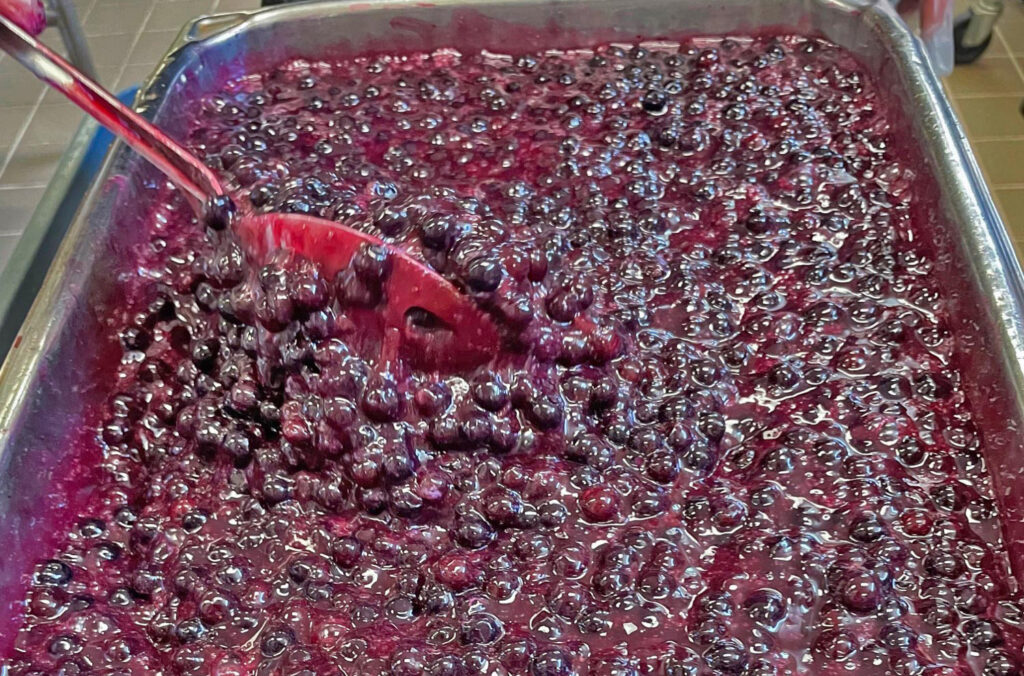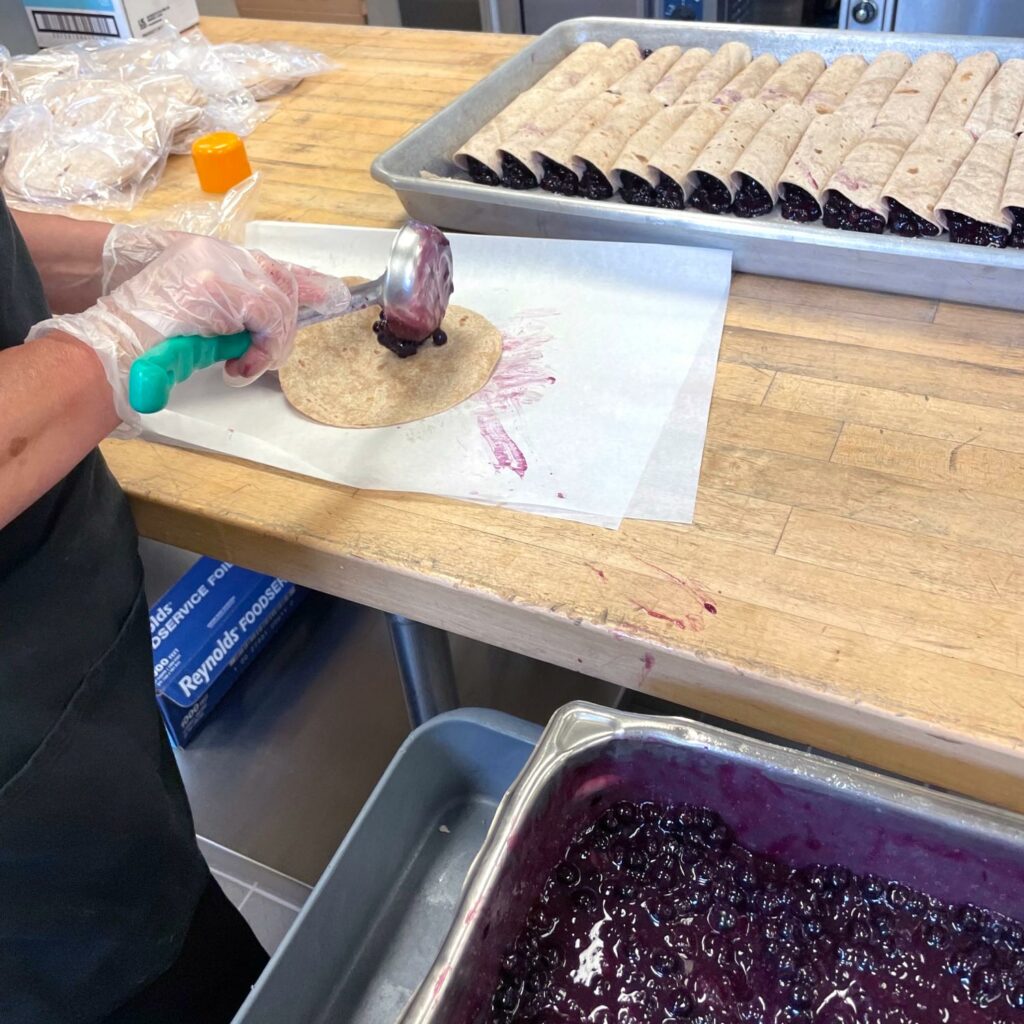Easy Creative Recipes That Keep Kids Cleaning Their Plates
As the culinary champion for Stanislaus County Probation Juvenile Hall in Modesto, California, Carrie Van Roekel, SNS, faces the daily challenge of making sure the kids in her care really enjoy what they’re eating and are getting the nutrients they need.
“Because these kids are confined and only live here temporarily, they don’t have the opportunity to go home and make other food choices. What our kitchen prepares is the food they get each day. So, it’s even more important that what we serve them, they enjoy eating. We want them to clean their plates. We want them to eat it all so they’re getting the nutrients they need.”

Van Roekel has been with the Stanislaus County Probation Department for nine years. She is exuberant, warm, passionate, and creative about the work she does. La Londe runs the Juvenile Hall kitchen where the kids—ages 14-18—receive three meals a day and one snack. Like schools across the country, she adheres to the USDA National School Nutrition guidelines. Additionally, Van Roekel runs the department’s Culinary Trade and Learning Program and is a Serve Safe instructor and proctor working with the kids to help educate them about safe food handling practices and hands-on cooking skills.
Taste & Nutrition—Critically Important
A fortuitous encounter at a School Nutrition Conference in 2014 led her to what she now calls her favorite fruit to serve her kids—wild blueberries. These tiny blue beauties grow in Maine and are different from regular cultivated blueberries (also known as high bush blueberries), especially when it comes to flavor. At the conference, she was able to taste frozen wild blueberries and quickly realized there was something different and special about the little wild ones.
“It was immediate – the incredible taste difference. Wild blueberries are not tart—they are sweeter; their flavors are just better.”
Not only was taste important to Van Roekel, but also nutrition, she loved that wild blueberries are lower in natural sugars and high in antioxidants.

“Kids love sweet things and wild blueberries have this natural sweetness. Wild blueberries give my kids the sweet flavor profile they enjoy without too much sugar and the nutrition they need. I see more and more youth that have juvenile diabetes, and they still need their fruit. Wild blueberries are lower on the glycemic index. So, it is an exceptionally good fruit to serve kids.”
Variety and Creativity—The Spice of Life
After that conference, Van Roekel made the switch from frozen cultivated blueberries to frozen wild blueberries for her program. The switch is paying off. Her kids love them.
“The number one challenge with feeding kids is getting them to eat the food you serve. It can take eight to 10 times serving something new before they will eat it,” said Van Roekel. “My kids fell in love with wild blueberries the very first time.”
She offers advice to other school nutrition directors: “Do a taste test between the wild and cultivated blueberries because you and your staff will notice a taste difference immediately and, more importantly, so will your kids.”
Today, Van Roekel serves a wild blueberry menu option every week, and her recipe ideas are both fun and tasty. On the menu, her kids will find wild blueberries as a simple side dish, so they can see and taste the berries. Wild blueberries are also mixed into oatmeal, layered into parfaits, swirled into smoothies, and added to a breakfast fruit pizza as a tasty topping. To replace syrup, wild blueberries are warmed and made into a topping or dipping sauce for pancakes and French Toast.
One of the kids’ favorite recipes is the Wild Blueberry Fruit Crisp.
“It can be hard to get kids to eat the fruits and grains they need so I have developed a fruit crisp recipe that has them eating up their fruit and grain servings without any hesitation. I took an existing USDA fruit cobbler recipe and swapped out the fruit to wild blueberries and added an oatmeal topping with cinnamon, nutmeg, and vanilla. My kids think it is a dessert, but it’s actually a dairy-free recipe that’s low in sugar and full of nutrition.”
Another kid favorite is Van Roekel’s extremely unique and delicious Wild Blueberry Breakfast Fruit Roll-up or Breakfast Fruit Enchilada.

Clean Plate Club Means Less Food Waste
Van Roekel manages a tight budget with food costs funded through the State of California and the federal government. She purchases her individually quick frozen (IQF) wild blueberries through the USDA school commodity program. A benefit of serving a fruit like wild blueberries that the kids really enjoy is that there is little to no food waste.
“Nothing hits the garbage can when I serve wild blueberries and that is extremely important when you’re managing a significant food budget,” Van Roekel notes. “Buying frozen is also cost effective because you can use them when you need them – which also helps to decrease food waste. Plus, wild blueberries are extremely easy to use and are a fantastically versatile ingredient.”
When she made the switch to wild blueberries, Van Roekel was also happy to learn that one pound of frozen wild blueberries provides 25% more servings than the same weight of frozen cultivated blueberries according to USDA yield data. For her food service program, this means lower cost per serving without sacrificing taste and quality.
Ultimate Compliment
The youth at the Stanislaus County Probation Department Juvenile Hall are typically short-term residents. When they go home many of them ask for the recipes they have enjoyed eating and, in some cases, have learned how to make. The staff even ask to take some of the more popular recipes home with them. At the top of the request list are the Wild Blueberry Breakfast Roll-ups and Wild Blueberry Breakfast Pizza.
“They want to make it for their families. It is a big honor and makes me excited that these kids have enjoyed the food we’ve prepared for them– it’s really the ultimate compliment,” Van Roekel concluded.

